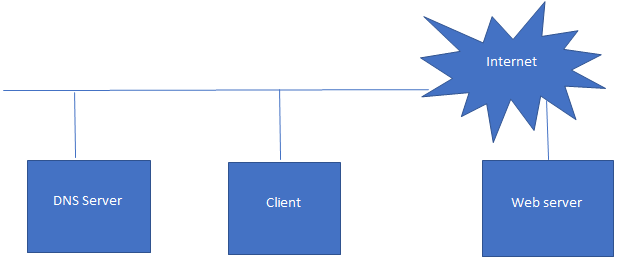Updated August 23, 2023

Introduction to Networking Protocols
Network protocols establish well-defined rules for communication among users over the internet or intranet. Both ends of the communication channel adhere to these rules for proper information exchange. People from industries, research institutions, etc., develop protocols. They then publish and accept them through international conferences. We categorize protocols based on various criteria, such as whether they relate to the transport layer or the network layer.
Understanding Networking Protocols
When we look to define the networking models, two kinds of layered models appear in the picture on which the roots of networking are laid –
- OSI Model
- TCP/IP Model
The OSI model is a 7 Layer model which comprises of following layers handling their tasks :
- Application Layer
- Presentation Layer
- Session Layer
- Transport Layer
- Network Layer
- Data link layer
- Physical Layer
The TCP/IP model contains 4 Layers only in contrast to the OSI model, and they only handle the tasks:
- Application Layer
- Transport Layer
- Internet
- Network Access
- The application layer has the user’s data and handles the encoding mechanisms.
- The transport layer supports communication between the end devices.
- The Internet layer provides logical addressing.
- The network layer controls hardware devices like routers.
- The data link layer is responsible for Mac addressing and communicating with the physical layer.
- The physical layer carries all stuff at the hardwired level.
Now let’s understand what an IP address is and the networking protocols associated with it.
An IP address serves as a unique decimal representation of binary numbers assigned to each device, thereby acting as an identity for devices connected to a network. There are two protocols put up in association with this, which are IPv4 and IPv6.
- In the IPv4 addressing, there are public and private IPs. The private IP is accessible inside the network, while the public IP is accessible throughout the internet.
How do Networking Protocols Work?
Here let’s first understand how DNS works:
Let’s understand what happens when you click at www.google.com; the client represents your system’s browser here, from which you submit a request on the internet; once you hit this URL, the call via channel gets transported to the DNS server, and it asks a query “what is the address mapped against this URL ?” Now the DNS server has a cache installed; it may already have a result, or otherwise, it will communicate with other DNS servers and return an IP. So after the IP resolution, the client’s request reaches that host’s web server.
Types of Networking Protocols
Below are the different types of networking protocols, which are as follows:
1. IPv6
Refers to Internet Protocol version 6, the future addressing format; as the number of machines continues to rise, IPv4 addresses are on the verge of exhaustion. In response, there is a shift towards adopting IPv6, which will offer structured public IPs to meet the increasing demand. The 3.4*10^34 possible combinations for addresses could represent numerous internet-connected devices. Once it has been introduced, the routing protocols and hardware may see ample changes in architecture.
2. IPv4
This is already an existing technique that we discussed above.
3. TCP/IP Protocols
The TCP/IP-based protocols are further classified into the following:
a. Web Protocols
- HTTP – It stands for HyperText Transfer Protocol, the format of messages and transmission, and this protocol manages web actions associated at the client and server end. The Worldwide web uses it. It runs on port 80.
- HTTPS – It stands for HyperText Transfer Protocol Secure, so it only enhances HTTP. This is used for secure communication; hence whenever you are out of the local host world, go by this.
- TLS – It stands for Transport Layer Security; this is a cryptographic protocol that provides end-to-end communications security over networks commonly used in transactions; forgery prevention, data leak prevention, etc., maintain the security.
- SSL – It stands for Secure Sockets Layer and establishes an encrypted link between browser and server; the web server requires an SSL certificate. To create both a public key and a private key, people use a cryptographic process.
b. File Transfer Protocols
- FTP – File Transfer Protocol is used for file transfer between client and server on a computer network.
- TFTP – Trivial File Transfer Protocol is how the client can get a file and put it into a remote host, the nodes that boot from LAN use it.
- SFTP – SSH File Transfer Protocol provides a secure connection to transfer and traverse the file system on local and remote systems.
- FTPS – It’s a secure File Transfer Protocol; TLS support and SSL are added here; we are not using a secure shell-based protocol.
- SMB – Server Message Block, used by Windows, allows computers within the same network to share files.
- NFS – Network File system is a distributed file system used in UNIX generally to access files among computers on the same network.
c. Email Protocols
- SMTP – Simple Mail Transfer Protocol is a push protocol to send an email, Post Office Protocol, or Internet Message Access Protocol, which is used to retrieve those at the receiver side. The application layer implements it.
d. Management Protocols
- Telnet – This tool allows two-way text communication on the internet and LAN using a virtual terminal connection.
- SSH – Secure Shell provides a secure method for remote login from one computer to another. It enables authentication and ensures security during the login process.
- SNMP – Administrators use the Simple Network Management Protocol to collect and organize information about network devices and modify the gathered data.
e. Media Protocols
- RTP – The real-time transport protocol transmits audio and video content over a network.
- RTSP – Real-time streaming protocol is a protocol for streaming; it establishes media sessions between endpoints.
Conclusion
We took a simple idea of the kind of network protocols available and what they have to offer us. We discussed how the DNS server operates and aids in address resolution and its involvement with IPv4, IPv6, and other protocols.
Recommended Articles
This has been a guide to What is Networking Protocols. Here we discussed the concepts and different types of Networking Protocols. You can also go through our other suggested article to learn more –


